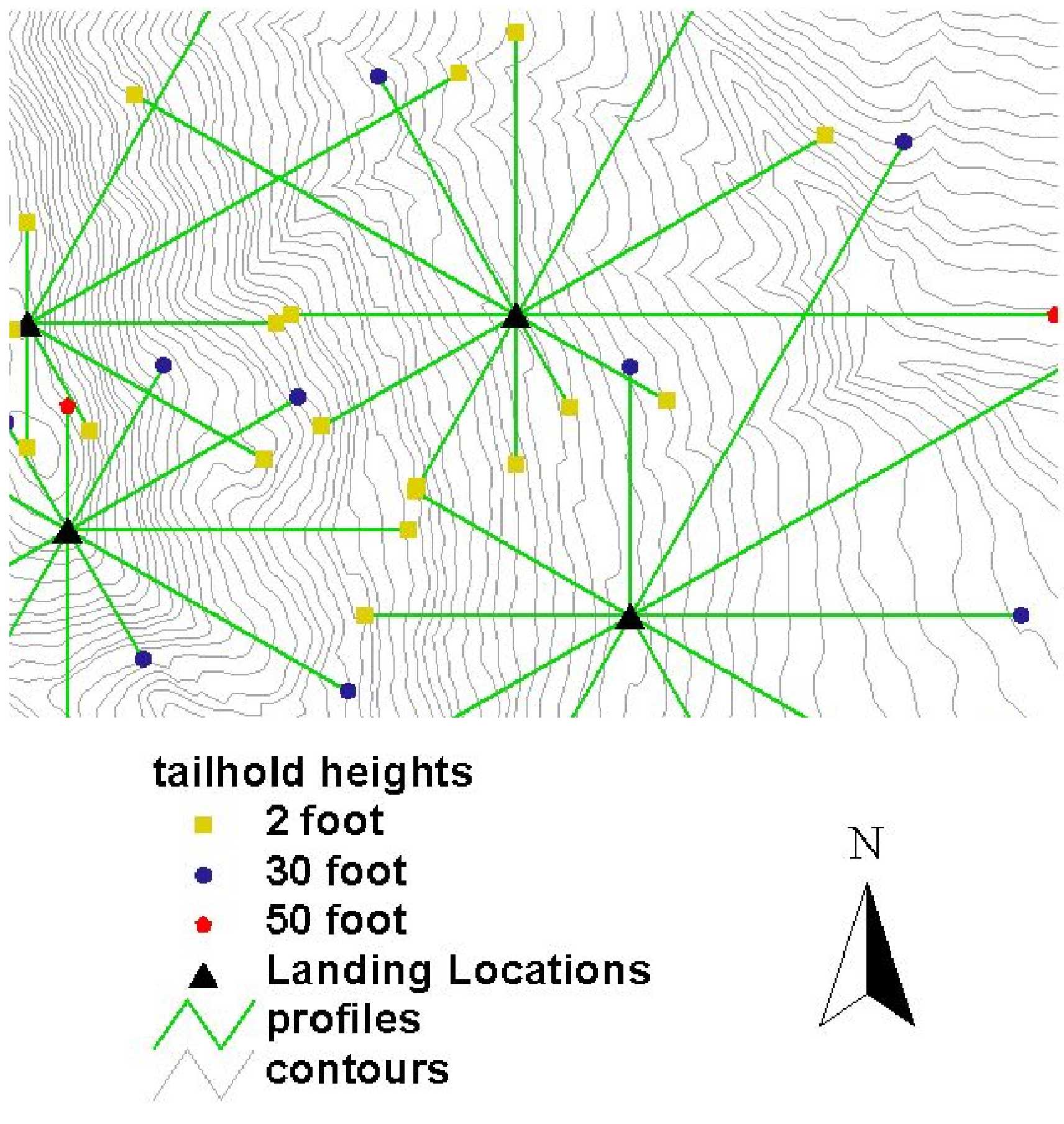The idea behind the conventional PLANS analysis is to provide complete, overlapping coverage of the planning area. This means that every section of ground on the map that is suitable for cable yarding should have at least one profile covering it. Landings should be selected in such a way that this full coverage is achieved while maintaining the required payload and without exceeding the maximum tailhold height for the timber in the relevant stand. Figure 35 shows a group of landings and profiles typical of the conventional PLANS analysis.

Figure 35. A typical group of landings, profiles, and tailhold heights from the conventional PLANS analysis. Notice how the profiles meet in the middle, with slight overlap where possible.
In order to achieve full coverage of the planning area, approximately 150 tower landings and 30 swing landings were analyzed. Additional swing landings were used in areas where the feasibility was not in question. In all, approximately 100 swing landings and 150 tower landings were required to cover all of the cable yarding ground in the planning area. In most cases, profiles were analyzed for a payload of 5000 lbs. In some cases, payload was sacrificed in order to obtain a longer profile, but the payload always exceeds the potential load. Tailholds varied between 2, 30, and 50 feet depending upon the need and the availability of tail trees. Profiles extended as far as 2000 feet where possible. Average profile lengths were closer to 1000 feet.
These results from the conventional PLANS analysis are used in the preliminary road design process (Chapter 9), and later in the creation of final setting systems (Chapter 10).
An alternative PLANS analysis was performed to examine the potential of longspan yarding systems in the Hoodsport planning area. Longspan systems are characterized by long, parallel profiles, more powerful yarders, and more logs per turn. Due to the addition of an extra log per turn, the design payload was increased to 6500 lbs. per turn. Twenty-three longspan profiles were analyzed with an average AYD of 1250 feet (ranging from 708 feet to 1850 feet). This corresponds to external yarding distances (EYD) of up to 4000 feet. These preliminary longspan profiles are used later in the final alternative analysis, discussed in Chapter 12.